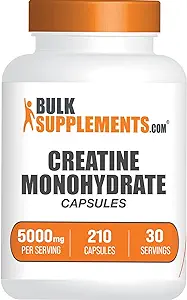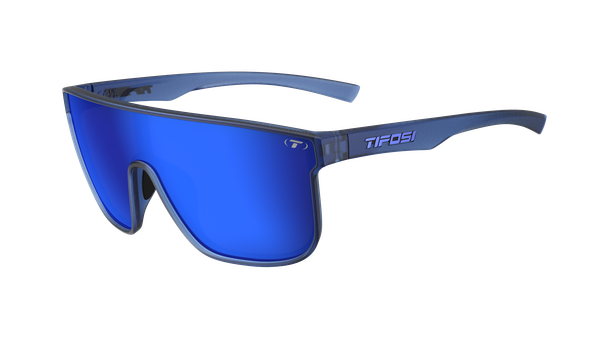Why all the cyclists you know are suddenly taking creatine

Exploring the Benefits and Myths of Creatine Supplementation for Cyclists
Cycling, whether on gravel roads or indoors, demands a unique combination of endurance and strength. In the quest for enhanced performance and recovery, cyclists often turn to various supplements, with creatine emerging as a popular choice. But what exactly is creatine, and how can it benefit cyclists?
What is Creatine?
Creatine is a naturally occurring compound found in muscle cells. It plays a critical role in energy production, particularly during high-intensity, short-duration activities like sprints. While our bodies produce creatine naturally, and it’s also found in foods like red meat and fish, supplementation can increase the muscle’s store of creatine phosphate. This is where the potential benefits for cyclists come into play.
Beyond Muscle Building: A Wellness Revolution
Creatine, traditionally known for enhancing muscle strength and athletic performance, has seen a remarkable 30% surge in popularity. This growth, as reported by New York-based trend tracking group Glimpse, spans beyond traditional fitness circles, attracting a diverse range of users including women, older demographics, and vegans.
The All-Rounder Supplement
Far from being just a muscle-building aid, creatine plays a crucial role in energy conversion. Its supplementation, surpassing natural bodily production levels, offers benefits like combating aging effects, improving recovery, and preventing dehydration and cramps.
Safety and Versatility
Esteemed as one of the most researched supplements, creatine enjoys a strong safety profile, debunking previous misconceptions of it being a performance-enhancing drug. Its variety of forms, with creatine monohydrate being the most studied, caters to different preferences and tolerances.
Optimal Usage
Brittany Michels, a NASM-certified personal trainer and registered dietician, recommends a daily intake of 0.03–0.06 grams per kilogram of body weight, either before or after training. While some forms may benefit from a ‘loading phase,’ it’s not mandatory.
The Cyclist’s Edge: Benefits of Creatine
Enhanced High-Intensity Performance
Creatine’s role in cycling is most pronounced during high-intensity activities like sprinting and hill climbing. Its ability to rapidly replenish ATP (adenosine triphosphate), the primary energy carrier in cells, means cyclists can sustain higher power outputs for these short bursts of activity. This translates to better performance in situations where quick, explosive energy is crucial, giving cyclists an edge in races where sprint finishes or steep climbs are decisive factors.
Improved Recovery
Creatine’s impact on recovery is another key benefit for cyclists. By enhancing the energy production in muscles, it reduces the onset of fatigue and aids in quicker recovery post-exercise. This means cyclists can bounce back faster after grueling rides or training sessions, enabling more efficient training cycles with less downtime. Reduced muscle soreness and better overall muscle recovery can significantly enhance a cyclist’s training consistency and performance.
Increased Muscle Mass
For gravel cyclists, who often face unpredictable terrains and need extra strength for control and stability, the muscle mass increase from creatine can be advantageous. While maintaining a lean physique is typical for cyclists, the strength gains from the slight increase in muscle provided by creatine supplementation can enhance endurance and power on challenging courses, making it easier to tackle rough terrains and prolonged climbs.
Myths and Misconceptions
Addressing myths about creatine is crucial. Contrary to some beliefs, creatine does not cause dehydration; in fact, it can enhance muscle hydration. It’s also not a ‘quick fix’ for fitness gains but a supplement that supports consistent training efforts. While some fear water retention, research shows that any initial weight gain is typically due to increased muscle mass, not excess water. When used responsibly, creatine is a safe and effective supplement, backed by extensive scientific research.
How to Use Creatine Effectively
- Start with a Loading Phase: A short period of taking a higher dose can rapidly increase muscle creatine stores.
- Maintenance Phase: Follow up with a lower dose to maintain these levels.
- Stay Hydrated: Adequate hydration is key when taking creatine.
- Quality Matters: Choose high-quality creatine supplements, preferably creatine monohydrate, for best results.
The Easiest Creatine to Take

Creatine isn’t always pleasant to get down, it’s gotten better (I remember choking down gritty cup fulls back in the early 2000s), but it’s still not perfect. The best way I’ve found to take the stuff is in capsule form. It costs a bit more but it’s way easier to take. This is exactly what I take daily.
Conclusion
Creatine can be a valuable addition to a cyclist’s regimen, offering benefits in performance, recovery, and muscle strength. However, it’s not a magic solution. A balanced diet, consistent training, and proper hydration remain the cornerstones of cycling success.





